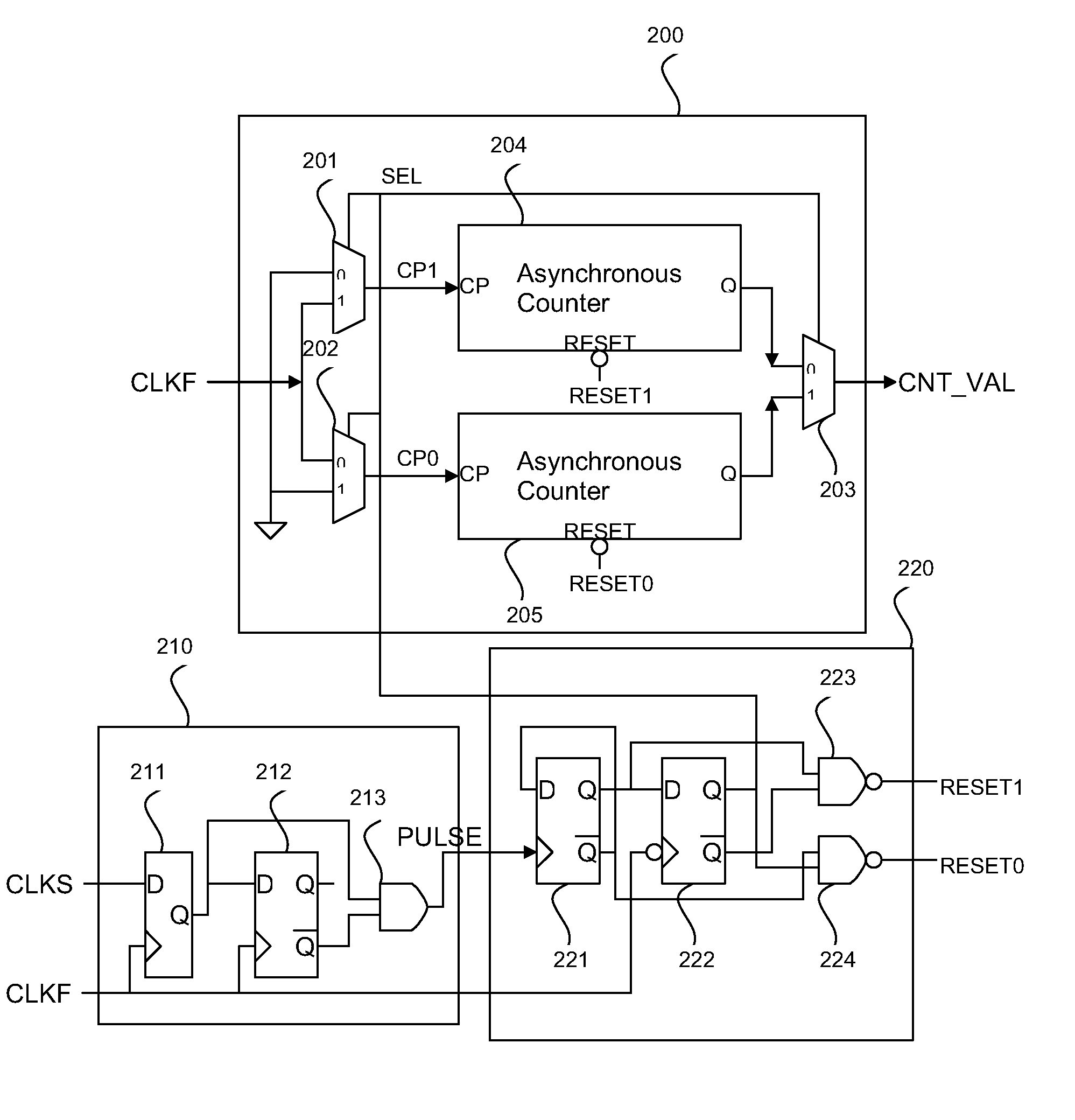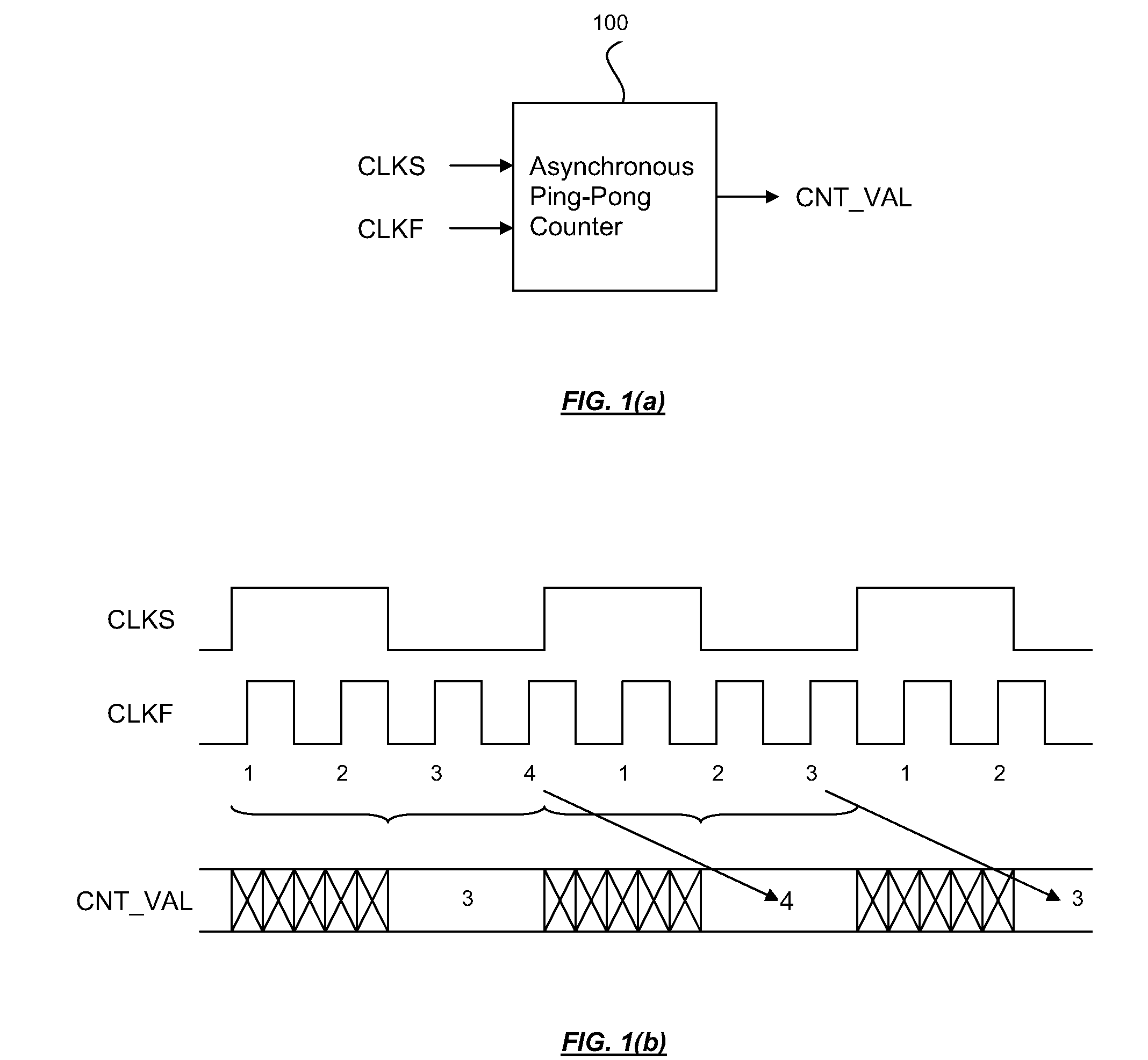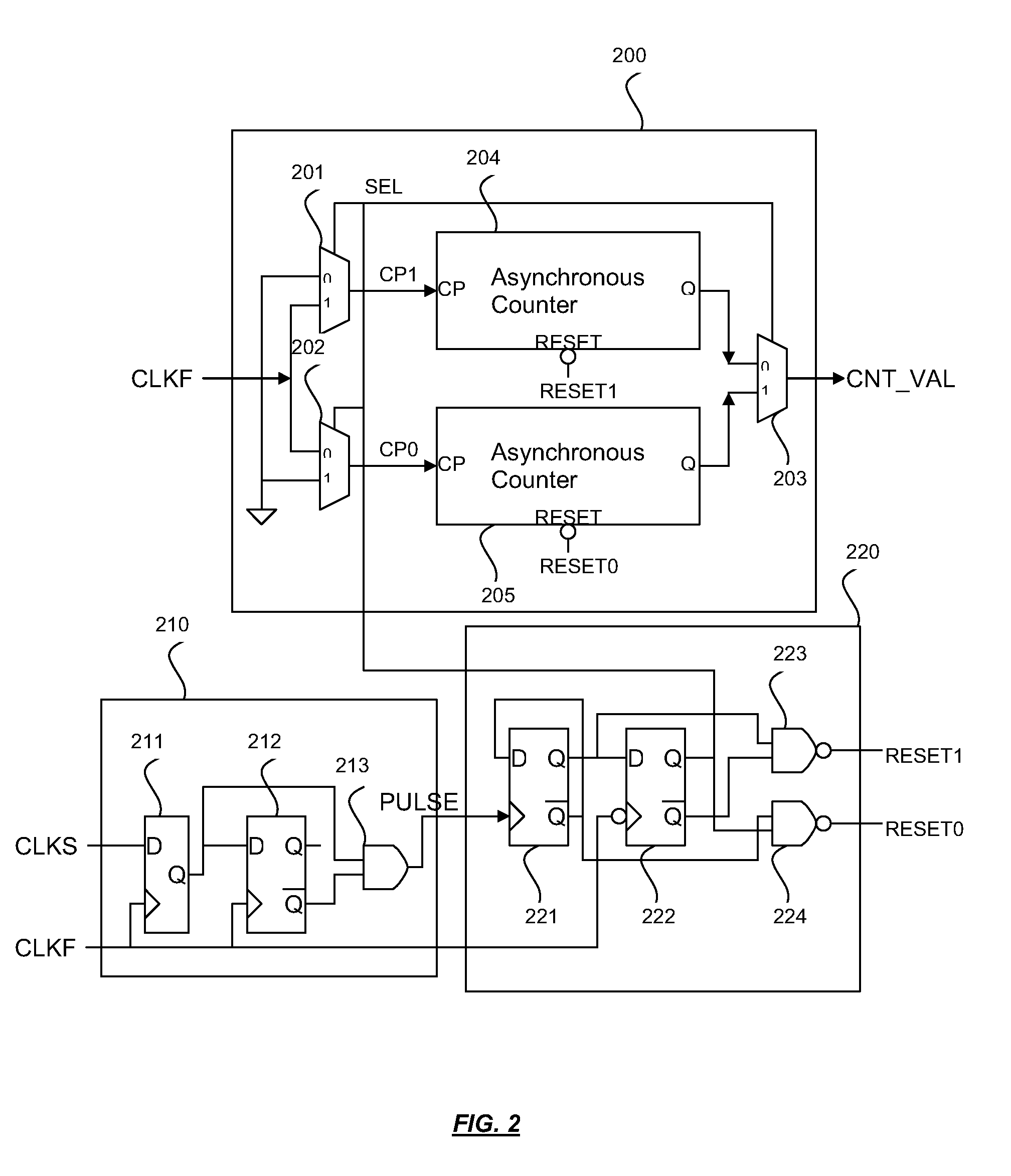Asynchronous ping-pong counter and therof method
a counter and asynchronous technology, applied in the field of design of counters, can solve the problems of almost impossible to meet the setup and hold timing requirements of each flip-flop by using any synchronous counter in existing technologies
- Summary
- Abstract
- Description
- Claims
- Application Information
AI Technical Summary
Benefits of technology
Problems solved by technology
Method used
Image
Examples
Embodiment Construction
[0014]In the present disclosure, numerous specific details are provided, such as examples of electrical circuits, components, and methods, to provide a thorough understanding of embodiments of the invention. Persons of ordinary skill in the art will recognize, however, that the invention can be practiced without one or more of the specific details. In other instances, well-known details are not shown or described to avoid obscuring aspects of the invention.
[0015]FIG. 1(a) shows a proposed asynchronous ping-ping counter in accordance with an embodiment of the present invention. In the example of FIG. 1(a), the asynchronous ping-pong counter receives a first input clock (CLKF in FIG. 1(a)), a second input clock (CLKS in FIG. 1(a)), and generates a digital output (CNT_VAL in FIG. 1(a)) that is the number of rising edges of the first input clock between two neighboring rising edges of the second input clock. Typical input and output waveforms are shown in the timing diagram of FIG. 1(b)...
PUM
 Login to View More
Login to View More Abstract
Description
Claims
Application Information
 Login to View More
Login to View More - R&D
- Intellectual Property
- Life Sciences
- Materials
- Tech Scout
- Unparalleled Data Quality
- Higher Quality Content
- 60% Fewer Hallucinations
Browse by: Latest US Patents, China's latest patents, Technical Efficacy Thesaurus, Application Domain, Technology Topic, Popular Technical Reports.
© 2025 PatSnap. All rights reserved.Legal|Privacy policy|Modern Slavery Act Transparency Statement|Sitemap|About US| Contact US: help@patsnap.com



